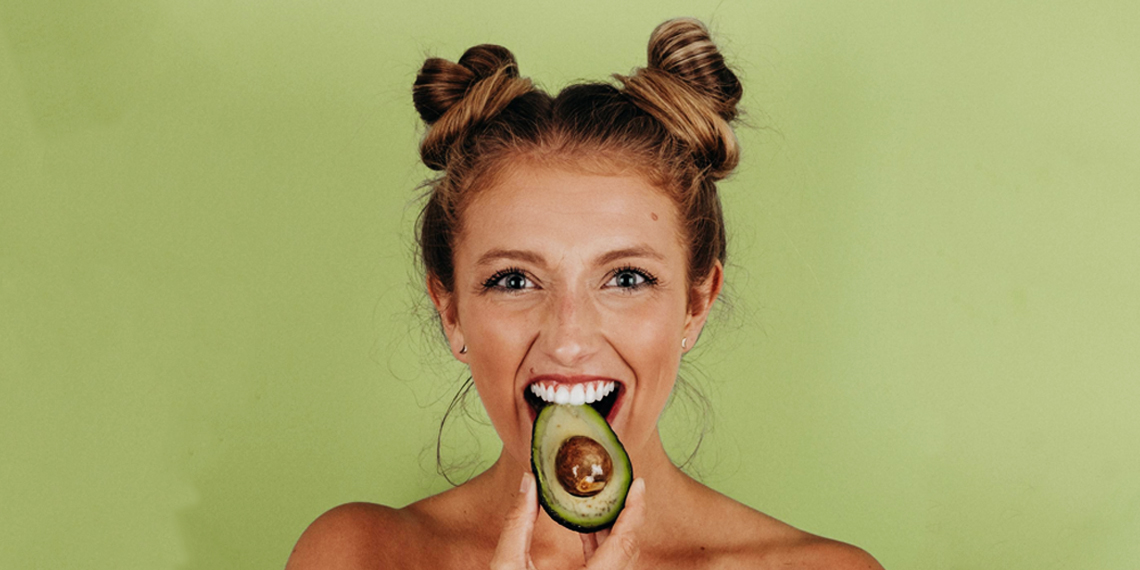Over the last few weeks, I’ve been tracking macros on MyFitnessPal. Initially, I was doing it to try and get back on Keto. (By “back on,” I mean I did it for two weeks before a vacation once.) Unsurprisingly, I bailed on Keto (nothing is low-carb enough!!!). and I then decided my #newyearnewme would be about counting macros instead. I’m currently using this calculator, which I found via this highly reliable fitness Instagram. I’m not even being sarcastic—there’s very good advice on there. My biggest challenge with macros so far has definitely been keeping my fat content in check. Within a week, I realized I knew way less about which foods are high fat than I thought. For example, I had a day of what I considered very healthy eating (salads! oats! grain bowls!), and then discovered my diet had been 60% fat. And this is why I have trust issues. So, I did some research into which of my “healthy” choices were causing that high fat content. I’m not talking about obvious fats—you should all know that baked goods are full of bad fats and avocados are full of good fats. These are the sources of fat you’re not as likely to guess as, say, a fried chicken sandwich or a BLT with mayo.
Disclaimer: Everyone’s dietary needs are different, and many diets may call for higher fat content. I am not advocating for a universal low-fat diet, so do not come for me. Rather, I am hoping this information may be illuminating to some of you (read: I don’t want to be the only one who didn’t already know all this).
Falafel
I’ll be honest, I’ve never really known a lot about the nutrition content of falafel. It felt like a kind of dietary gray zone. Not as healthy as a vegetable, but probably better than cheese. Right? Not really. While trying to design a low-fat grain bowl at Tender Greens, I was pretty shocked to see that the steak topping was lower in fat than the falafel option. While falafel can be a healthy dish (the ingredients themselves are nutrient-rich), I’d somehow forgotten that it’s typically deep-fried. This adds, in scientific terms, a sh*t ton of fat to your meal. FWIW, the “baked falafel” option at Tender Greens was way healthier—but unless a menu specifies “baked,” you should assume it’s deep fried, and therefore higher in fat.
Tofu
Tofu is a similar deal to falafel—it’s all about how it’s prepared. While tofu isn’t deep-fried quite as often as falafel (though still more often than you’d think), it’s really good at soaking up whatever it’s cooked in. And given that tofu on its own has just about zero flavor (it’s okay, we can all admit that), it’s usually cooked in a bunch of oils, sauces, etc. So tofu on its own? Low-fat, healthy option. But the way it’s usually prepared in restaurants can make it a higher-fat option than something like chicken.
Nuts
Okay, this one errs more on the side of “foods we knew were high in fat.” But take a minute and actually consider how many “healthy options” feature nuts as a key ingredient. Protein bars that pride themselves on not adding sugar? Full of nuts. Overnight oats? Probably filled with nut butter (or WTF are you doing). Even a lot of salads and bowls will add nuts as a topping, plus, almonds are constantly touted as the ideal mid-afternoon snack. We also all know the problem with nuts—they are impossible to portion for how calorie-dense and fat-dense they are. And anyone who says they’re full after 6 almonds is a dirty liar.
So, while nuts are full of technically good fats, it’s still super easy to go over on your fat content goals if all the healthy options you’re choosing are nut-heavy. So if my breakfast included 2 tbsp of almond butter (18 grams of fat and it never feels like enough), maybe I don’t also have have a nut-based Lara Bar at 4pm (9 grams of fat), and snack on nuts at 6pm (19 grams of fat). That brings my fat content from nuts alone (not even the fun fats, like sauces and cheese and sugar) to 46 grams, when my daily goal is 48. (Let it be known that my total fat content for that day wound up being 90+ grams. This sh*t is hard!!!)
Olive Oil/Butter
I know! I said this list would be about non-obvious sources of fat. Yet here I am basically listing the liquid form of fat and saying “surprise! This is fat.” Sue me, but also listen because this is probably the #1 thing that people forget to count in their diets. One tablespoon of olive oil has 14 grams of fat. One tablespoon of butter has 12 grams of fat. (The type of fat they offer is different. Here is a long article on different fats and how they affect you.) Even at home, I struggle to cook something edible using less than 2 tbsp of one of these. It can be super tempting to just log the one chicken breast you cooked in there, but unless you’re using a cooking spray, you have to account for the fats it absorbed.
Well, that’s the end of my tirade on fat, and now I never want to look at a nutrition label again! Remember, the worst thing you can do with your diet is eat in a way that makes you miserable, because you know that sh*t won’t last. My fat content is still way too high most days, but I’m figuring out what a low-fat day I can live with looks like. At least it’s not Keto!



















































